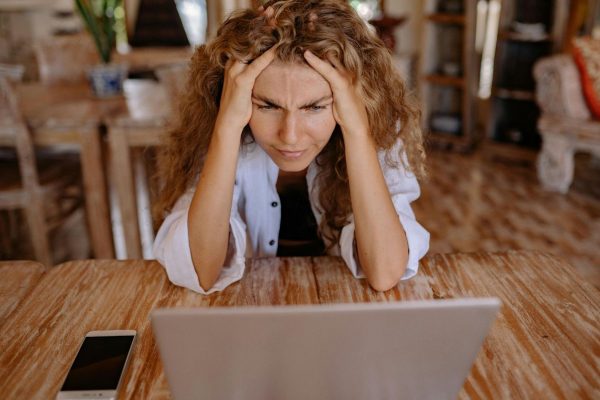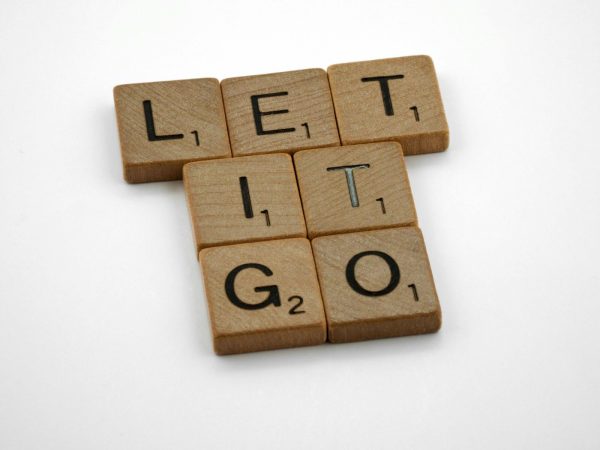| Written by Jessica Lelinho, MA, LPC, NCC, LCADC, C-DBT
Do you feel like you’re constantly worrying or sweating the small stuff? Feel like you’re never able to calm down? I think it’s safe to say that at times we all struggle with anxiety in some way or another. Some anxiety is healthy anxiety, however, when our anxiety becomes debilitating we need to talk to someone to help us cope with our anxiety.

What is Anxiety?
The American Psychological Association defines anxiety as an emotion characterized by feelings of tension, worried thoughts, and physical changes such as increased blood pressure. While anxiety and fear are not the same thing, the terms are used interchangeably. The difference between anxiety and fear is that anxiety is a future-oriented long-acting response which broadly focuses on a diffused threat, where fear in comparison, is an appropriate present-oriented short-lived response to a clearly identifiable and specific threat.
Types of Anxiety
National Institute of Mental Health identified various types of anxiety disorders to include:
-
- Generalized Anxiety Disorder (GAD): This type of anxiety typically involves a persistent feeling of anxiety or dread which interferes with daily life. Individuals who experience this type of anxiety frequent anxiety for months if not years. This type of anxiety is different from occasional worrying or experiencing stress due to stressful life events.
- Panic Disorder: Individuals suffering from this type of anxiety typically have frequent and unexpected panic attacks. A panic attack is a sudden period in which the individual experiences feelings of intense fear, discomfort, or have a sense of loss of control even if there is no visible danger present or trigger for danger. It is important to note that not all individuals who experience a panic disorder have panic attacks.
- Social Anxiety Disorder: Individuals who experience this type of anxiety often have an intense, persistent fear of being watched or judged by other individuals which can result in a feeling of fearing social situations that seems beyond their control. Some individuals’ fear of social situations can get in the way of attending school and work or even doing everyday activities or tasks.
- Various phobia-related disorders: Phobia related disorders can apply to a broad range of fears or anxiety about specific types of objects or situations. Common phobias can include:
-
-
- Fear of flying
- Fear of heights
- Fear of specific animals (i.e., spiders, dogs, or snakes)
- Fear of receiving shots
- Fear of blood
-
- Separation anxiety disorder: In this type of anxiety disorder, the individual fears being away from those individuals that they are close to. Oftentimes, individuals struggling with this type of anxiety, worry that something bad could potentially happen to their loved ones while they are away from them and/or not together. Due to that fear, this can cause avoidance of being alone and/or away from their loved ones. Additionally, individuals suffering from this type of anxiety disorder, can potentially have bad dreams about the separation and/or feelings of not feeling well when the separation is going to happen. It is important to note that most often separation anxiety is thought to be attributed to children, however, adults can also be diagnosed with separation anxiety.
Symptoms of Anxiety
Each type of anxiety disorder has their own set of symptoms. National Institute of Mental Health identified the following symptoms to be associated with the following types of anxiety:
- Generalized Anxiety Disorder (GAD)
-
-
- Feelings of restlessness, wound up, or feeling on edge
- Fatigued easily
- Difficulty concentrating
- Irritability
- Experiencing headaches, muscle aches, stomachaches, or unexplained pain
- Sleep difficulties (i.e., difficulty falling asleep or staying asleep)
-
- Panic Disorder
-
-
- Individuals who experience panic attacks can have the following symptoms, however, not all individuals diagnosed with panic disorder experience panic attacks:
- Pounding/racing heart
- Sweating
- Trembling or tingling
- Chest pain
- Feelings of impending doom
- Feelings of being out of control
- Individuals who experience panic attacks can have the following symptoms, however, not all individuals diagnosed with panic disorder experience panic attacks:
-
- Social Anxiety Disorder
-
-
- Blushing, sweating, or trembling
- Pounding or racing heart
- Stomachaches
- Rigid body posture or overly soft spoken
- Difficulty making eye contact with others and having difficulty being around others who they do not know
- Feelings of self-consciousness or feelings of being judged in a negative manner
-
- Phobia Disorder
-
- Irrational or excessive worry about encountering their feared object or situation
- Actively avoiding the feared object or situation
- Experiencing immediate anxiety when encountering the feared object or situation
- Endure unavoidable objects and/or situations with intense anxiety

Statistics on Anxiety
The Anxiety & Depression Association of American identified the following statistics in regards to Generalized Anxiety Disorder, Panic Disorder, Social Anxiety Disorder, and Specific Phobias:
- Generalized Anxiety Disorder
- GAD affects 6.8 million adults or 3.1% of the U.S. population, yet only 43.2% are receiving treatment.
- Women are twice as likely to be affected as men. GAD often co-occurs with major depression.
- Panic Disorder
- PD affects 6 million adults or 2.7% of the U.S. population. NIMH: Panic Disorders.
- Women are twice as likely to be affected as men.
- Social Anxiety Disorder
- SAD affects 15 million adults or 7.1% of the U.S. population. NIMH: Social Anxiety Disorders.
- SAD is equally common among men and women and typically begins around age 13. According to a 2007 ADAA survey, 36% of people with social anxiety disorder report – experiencing symptoms for 10 or more years before seeking help.
- Specific Phobias
- Specific phobias affect 19.3 million adults or 9.1% of the U.S. population. NIMH: Specific Phobias.
- Women are twice as likely to be affected than men.
- Symptoms typically begin in childhood; the average age of onset is 7 years old.
- Obsessive-compulsive disorder (OCD) and posttraumatic stress disorder (PTSD) are closely related to anxiety disorders, which some may experience at the same time, – along with depression.
Treatment to Address Anxiety
Anxiety typically is treated with psychotherapy, medication, and/or both. Various different types of therapy can be utilized to address anxiety.
Treatment of Anxiety by Therapy
The National Institute of Mental Health identified psychotherapy also known as “talk therapy” to be helpful when treating those individuals suffering from anxiety. The following two types of psychotherapy are found to be helpful when treating individuals suffering from anxiety:
- Cognitive Behavioral Therapy (CBT): In this type of therapy, individuals are taught different ways of thinking, behaving, and reacting to situations to assist them in decreasing their anxiety and feelings of anxiousness or fear. One type of common therapy, associated with anxiety is exposure therapy. Exposure therapy will focus on the confrontation of fears underlying the anxiety disorder to assist in engagement of activities that have been avoided. Exposure therapy is often utilized hand-in-hand with relaxation exercises. CBT is well studied and is considered to be the gold standard for psychotherapy.
- Acceptance and Commitment Therapy (ACT): This type of therapy is similar to CBT in that it focuses on negative thoughts, however, the approach of focusing on negative thoughts is different. ACT utilizes strategies such as mindfulness and goal setting for a reduction of discomfort and anxiety. ACT is a newer therapy so data available on the effectiveness is less in comparison to CBT.
Benefits of Therapy
About 75% of individuals who engage in therapy for mental health find it to be helpful. Individuals who attend therapy often see improvements in their symptoms of mental health in addition to their quality of life. Therapy has various benefits that have been identified by verywellhealth:
- The ability to get through a challenging life event or situation
- Addressing symptoms of excessive sadness, guilt, or even anger
- Treatment of a mental health condition (i.e., anxiety, depression, etc.)
- Navigation of interpersonal relationships (i.e., family, friends, co-workers)
- Improvements in: communication skills, sleep, happiness or life satisfaction, empowerment, mental function, productivity, attendance at school or work, relationships or interactions with other individuals, overall physical well-being (i.e., lower blood pressure or less chronic pain), coping skills, and management of behavioral health goals (i.e., quitting smoking or drinking alcohol)
How to Reduce Anxiety
The best ways to reduce anxiety include exercise, mindfulness, and relaxation.
We all have anxiety at times which can be considered healthy or unhealthy. When our anxiety becomes unhealthy, that is when we need to gain control of it and seek professional help. These are just a few of the tips that can be utilized to help gain control of your anxiety to result in reduction of anxiety.
If you are looking to address your anxiety, don’t hesitate to reach out for help. Practicing anxiety reducing activities and engaging in therapy can lead to decreasing mental health symptoms of anxiety. A licensed professional can assist you in overcoming these challenges.
When Jessica is not providing therapy, she enjoys spending time with her family and friends, listening to country music, cooking, baking, and going to the beach.
Check out Jessica’s professional bio here
Email Us: info@exceptionalwellnesscounseling.com
Call Now: (908) 415-2042
NEXT STEPS & RESOURCES
-
- Are you ready to take your first step? Reach out to us.
- Do you feel you maybenefit from counseling during this time? Take the first step.
- Interested in online counseling? Learn More
- Interested in group counseling? Learn More

